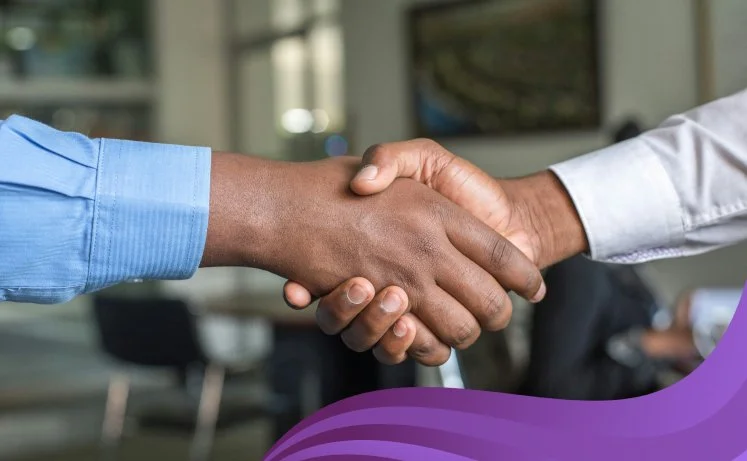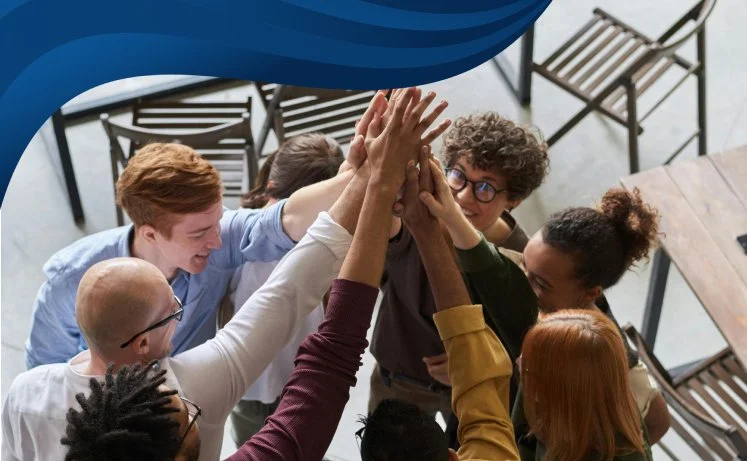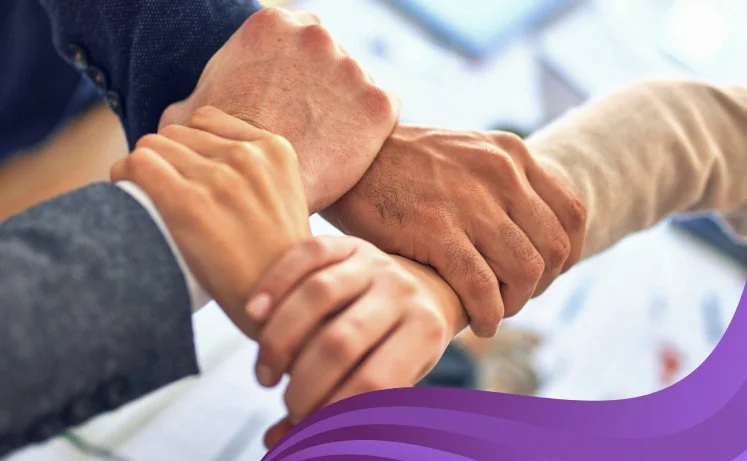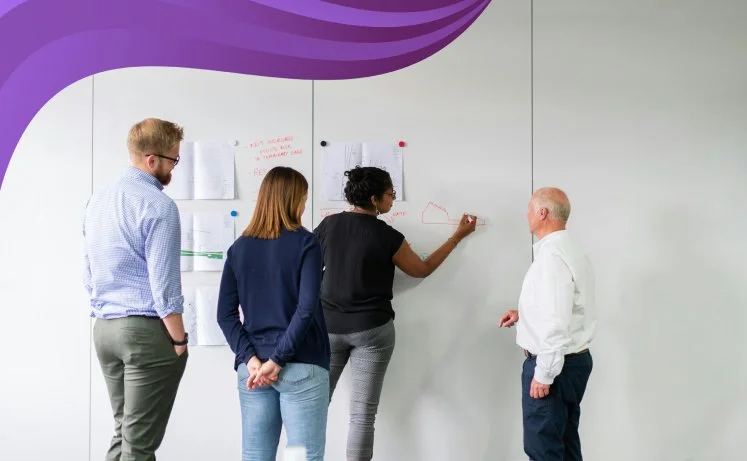
5. Resourcefulness Series
Time and Resource Management
5.1 Make the Most of your Time
Time is one of a leader’s most valuable—and limited—resources. Uncover the habits and distractions that waste time and energy, and replace them with practical strategies to prioritize what matters most, set boundaries, and make meetings more purposeful.
-
Protect my time by focusing on what matters most and cutting out what doesn’t.
-
Common time-wasters and unproductive habits
The Eisenhower Matrix: Urgent vs. Important
Prioritization and boundary-setting techniques
Practical tools for running effective meetings
-
Recognize and break unproductive time habits that sap energy
Use prioritization tools to guide decisions and task management
Say no to low-value tasks or meetings without guilt
Apply strategies for running or participating in efficient, outcome-focused meetings
-
What unproductive habits drain my energy and leave me feeling unaccomplished?
How can I distinguish between tasks that are important, urgent, or neither—and use this to guide my decisions?
How can I prioritize more effectively, including saying no and minimizing time-wasters?
What techniques will help me make meetings more efficient and valuable?
5.2 Optimizing Processes
5.3 Sustainability Leadership in Action
Inefficient processes drain energy, waste resources, and frustrate teams. Participants will be introduced to the Lean mindset and simple tools that help leaders and teams work smarter, not harder. Through hands-on practice, participants will learn how to spot inefficiencies, map a process, and identify small improvements that can make a big difference.
-
Look for opportunities to reduce waste and improve flow in everyday work.
-
The Lean mindset: value, waste, and continuous improvement
The 8 Wastes (defects, overproduction, waiting, non-utilized talent, transportation, inventory, motion, extra processing)
Simple process mapping tools (SIPOC, value stream mapping lite)
Hands-on group exercise: mapping and improving a common process
-
Identify and reduce time-wasting steps in routine processes
Use Lean tools to analyze workflows
Spot process waste in real-world examples and propose fixes
Lead small process improvements that improve efficiency and morale
-
What is Lean process improvement, and how can it help me and my team work smarter, not harder?
How can I spot inefficiencies and “waste” in everyday processes that drain time, resources, or energy?
What simple Lean tools can I use to map a process and identify opportunities to improve?
How can I take a small step to optimize one of my own processes right away?
Our current linear “take–make–waste” systems are depleting the planet’s natural resources faster than they can be renewed. Participants will be challenged to rethink consumption and production through the lens of circular thinking and regenerative leadership practices. Participants will explore the cause-and-effect of hyper-consumerism and leave with practical steps to minimize impact in both personal and organizational contexts.
-
Lead with stewardship—making decisions that regenerate resources instead of depleting them.
-
Linear vs. circular systems (take–make–waste vs. regenerate–reuse–restore)
Regenerative leadership principles (inspired by sustainability thought leaders)
The impacts of hyper-consumerism on people, planet, and future generations
Responsible consumption practices at both individual and organizational levels
Case examples of circular economy models in action
-
Shift thinking from linear consumption to circular and regenerative practices
Identify opportunities to reduce waste and energy use in daily operations
Role-model responsible consumption practices that influence others
Embed stewardship into team or organizational decisions and policies
-
How do today’s linear processes and hyper-consumer habits deplete natural resources and threaten future generations?
What can regenerative and circular processes teach us about leading more responsibly?
What everyday choices and consumption practices can I adopt to reduce my environmental impact at work and at home?
How can I influence my team and organization to lead with stewardship and embed sustainability into our practices?
5.4 Project Management Foundations
Most leaders run projects—even if “project manager” isn’t in their job title. This session demystifies project management by covering the essentials: what makes a project unique, the roles and functions that support delivery, the different approaches that can be used to get work done, and how trade-offs between time, cost and scope shape project outcomes.
-
Frame work as a project—and manage the trade-offs of time, cost, and scope with intention.
-
Definition of projects vs. operations
Core principles of project management
Typical project roles and functions (sponsor, project manager, team, stakeholders)
Delivery approaches: traditional/waterfall, iterative, hybrid, agile
PMBOK® Guide (Seventh Edition): process groups and performance domains
The triple constraints triangle (scope, time, cost + quality overlay)
Interactive game: exploring issues and opportunities that impact the triangle
-
Recognize when to treat work as a project to improve clarity and results
Select an appropriate delivery approach for the type of project and context
Clarify roles and responsibilities across team members
Use project process groups and domains as a guide for organizing and tracking work
Use the triple constraints triangle to explain trade-offs and set realistic expectations with stakeholders
-
What is a project, and how is project management different from day-to-day operations?
What roles and approaches help bring structure and accountability to project work?
What common process groups or performance domains can guide you in organizing and delivering successful projects?
What trade-offs and constraints do leaders face in addressing risks and issues that arise on projects?
5.5 Initiate Your Project
Every successful project begins with a strong foundation. In this lab, participants roll up their sleeves and apply project management tools directly to their own initiatives. By defining the problem or opportunity, creating a clear project charter, and right-sizing scope, time, and budget, participants walk away with a tangible roadmap that positions their project for success.
-
Start every project with clarity—defining the why, the what, and the how before jumping to execution.
-
Defining the problem/opportunity
Root cause analysis
Future-state design and theory of change
Writing a project charter
Right-sizing project scope to project constraints (resources, time, and budget)
-
Frame real projects with a clear problem/opportunity statement and future state vision
Draft a project charter to align sponsors and stakeholders around shared goals
Apply the triple constraints lens to anticipate trade-offs and set realistic expectations
Use simple planning tools to prepare for effective project execution
-
How do I clearly define and analyze the problem or opportunity that my project will address?
How can I identify a desired future state and plan to address that future state?
How do I write a concise project charter with a compelling case for change, success measures, outcomes, and outputs?
5.6 Planning and Managing Your Project
A strong start is only the beginning—projects succeed when leaders can plan, manage, and adapt along the way. In this applied lab, participants use project planning templates and management techniques to refine their project scope, schedule, cost, and manage their project risks, key relationships, and communications. They also learn how to monitor and control projects in real time, applying practical tools to track progress, manage risks and issues, and address stakeholder concerns before they become roadblocks.
-
Stay proactive and disciplined in managing projects—planning for success and adapting when challenges arise.
-
Templates and tools for project planning and management
Monitoring and controlling projects: progress tracking, issue management, risk logs
Stakeholder communication strategies for alignment and transparency
-
Develop and refine project scope, schedule, cost, and risk management plans
Use templates to plan engagement and communications
Apply monitoring and control tools to track project health and progress
Anticipate and address risks, issues, and concerns in real time
-
What templates and tools can I apply to create a realistic project plan including scope, schedule, costs and risks?
Who should I spend my time with that will be impacted by the project and how can I communicate with them more effectively?
How can I monitor and track project progress to stay on course?
What approaches help me manage risks, issues, and concerns during delivery?
5.7 Realizing your Project Benefits
Projects don’t end when the deliverables are handed over—they end when the intended value is realized. Learn to focus on benefits, not just outputs, by planning for sustainment, engaging key parties, overcoming barriers to adoption, and closing projects well.
-
Measure success by the value delivered, and closing projects with discipline and reflection.
-
Benefits realization planning (linking outputs to outcomes and value)
Common barriers to realizing benefits and how to mitigate them
Strategies for sustainment and stakeholder engagement
Project closure practices: evaluation, lessons learned, celebrations
-
Define benefits and success measures early and track them through delivery
Identify barriers to benefits realization and create strategies to mitigate them
Develop a sustainment plan that keeps value alive beyond project completion
Use lessons learned to improve performance on future projects
Close projects with transparency and celebrate achievements with the team
-
What common challenges and barriers can prevent projects from realizing benefits?
What strategies help me plan for benefits realization, sustainment, and engagement with key parties?
How do I close out a project effectively?







